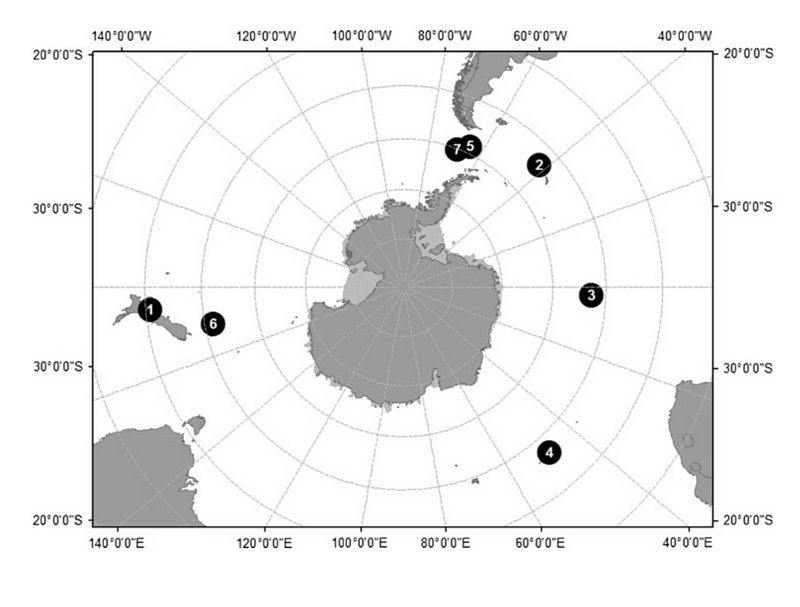Elusive Type D Killer Whales Discovered Near Chile's Shores
Written on
Chapter 1: Discovery of Type D Killer Whales
For decades, sightings of a peculiar type of killer whale have been reported by fishermen and tourists, as well as through an intriguing mass stranding incident in New Zealand in 1955. These enigmatic creatures, referred to as “Type D killer whales,” had never been observed alive in their natural habitat—until now.
In January, after an extensive search spanning over a decade, a research team successfully located a pod of approximately 30 Type D orcas in the turbulent waters just south of Chile. Marine ecologist Robert Pitman, who specializes in the ecology and systematics of Antarctic killer whales at the National Oceanic and Atmospheric Administration (NOAA), noted their notably smaller size in a video release.
Orcas exhibit a varied diet, with different populations focusing on specific prey types. From fish to marine mammals like seals and dolphins, these apex predators often hunt in packs, reminiscent of wolves. Notably, Type D orcas are known to primarily consume marine fish.
“Fish-eating populations tend to be smaller,” explained Dr. Pitman, emphasizing that there’s no need for them to pursue larger prey.
Type D orcas measure several feet shorter than their more commonly recognized Antarctic counterparts. They possess a rounder forehead and a uniquely narrow dorsal fin that is shorter and pointier than in other orca types. Additionally, they feature a paler saddle behind the dorsal fin and a notably small white patch near their eyes.
“Some individuals hardly have any eye patch at all,” Dr. Pitman remarked, suggesting a possible transition in their distinctive markings.

Chapter 2: The Evidence of Their Existence
Following the examination of the 1955 stranded orcas, scientists speculated whether their unusual physical traits were due to genetic anomalies. However, in 2005, Type D orcas were photographed while feeding on toothfish from commercial fishing lines near Crozet Island, located in the southern Indian Ocean. Encounters with these whales are relatively frequent around Crozet, with at least 14 reported sightings from that region.
Crozet Island is significantly distant from New Zealand, where the orcas previously stranded, hinting that Type D orcas are likely distributed throughout the subantarctic waters.

Observations suggest that the Type D orcas' range encircles Antarctica, although they seem to avoid the coldest regions. Consequently, researchers proposed the common name “subantarctic killer whale” in a 2011 report.
Behaviorally, these orcas differ from other Antarctic types. Fishermen have noted that Type D killer whales tend to maintain their distance from boats when other orca types are present, and there is no observed interbreeding between the different types due to distinct variations in eye patch size and shape. Their swimming patterns are also atypical.
“When they surface, they resemble pilot whales,” Dr. Pitman added.
Chapter 3: Gathering Data for Analysis
During their recent encounter on January 23, Dr. Pitman and his team collected tissue samples for DNA analysis. “This marks our first sample of a Type D killer whale,” he confirmed. The samples are now en route to the laboratory for further investigation.
“These samples are crucial in determining whether this killer whale variant is a distinct species,” Dr. Pitman noted, highlighting the significance of the research.
With the financial backing of an anonymous donor, Dr. Pitman had access to a 22-meter research vessel, the Australis, which facilitated the assembly of an international team of experts to aid in their quest. After weathering severe winter storms for over a week, they finally set sail from Ushuaia, Argentina.
Fortune favored them as they spotted about 30 Type D orcas, who spent around three hours near their boat. Team member Rebecca Wellard utilized a specialized underwater microphone to record their vocalizations and captured video footage as the whales curiously approached her equipment. These materials revealed their distinct body shapes and color patterns.
The photographs, videos, audio recordings, and tissue samples collected from the Type D orcas serve as a poignant reminder of the vast unknowns that still exist within our oceans. “Type D killer whales may represent one of the largest undiscovered animals on Earth, underscoring how little we understand about marine life,” Dr. Pitman concluded.